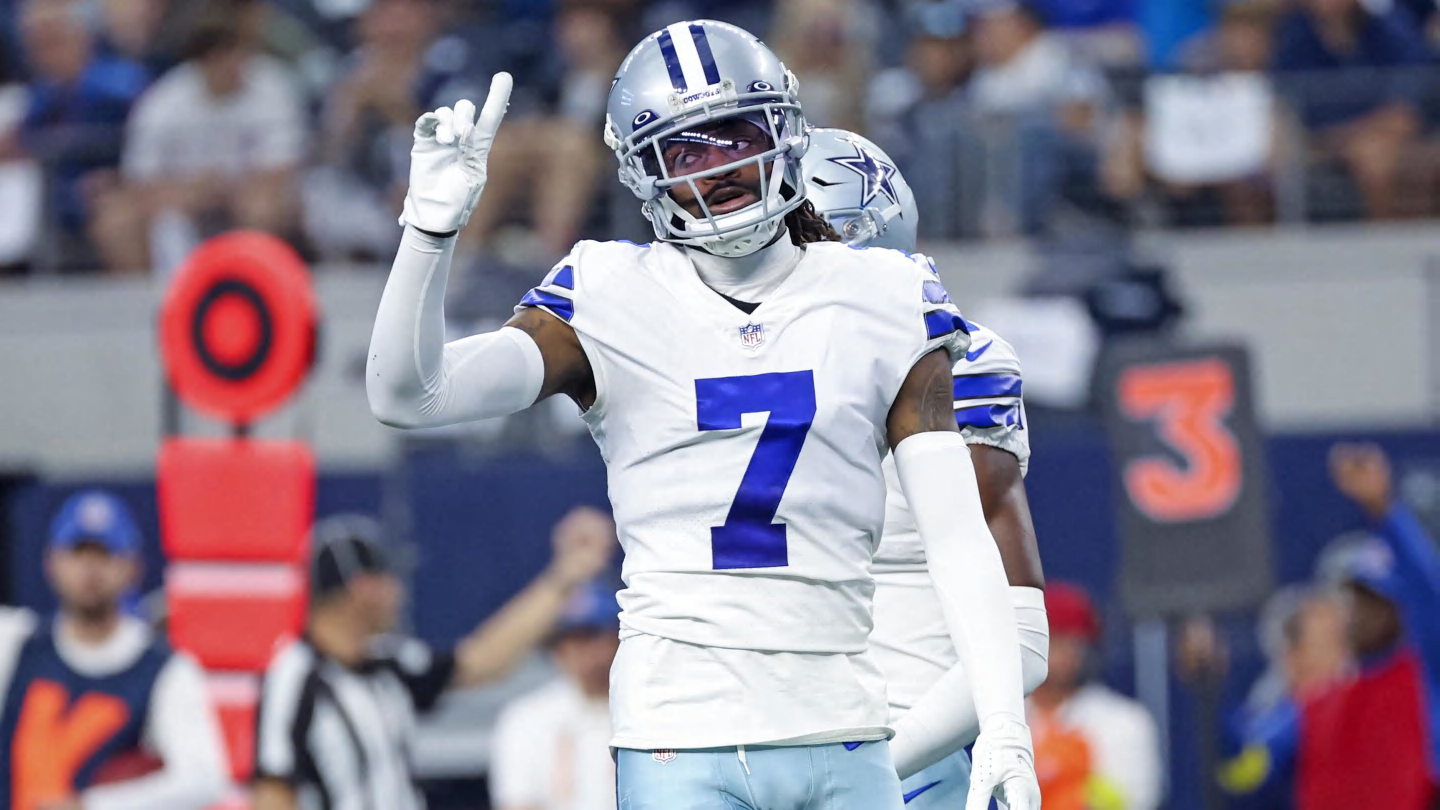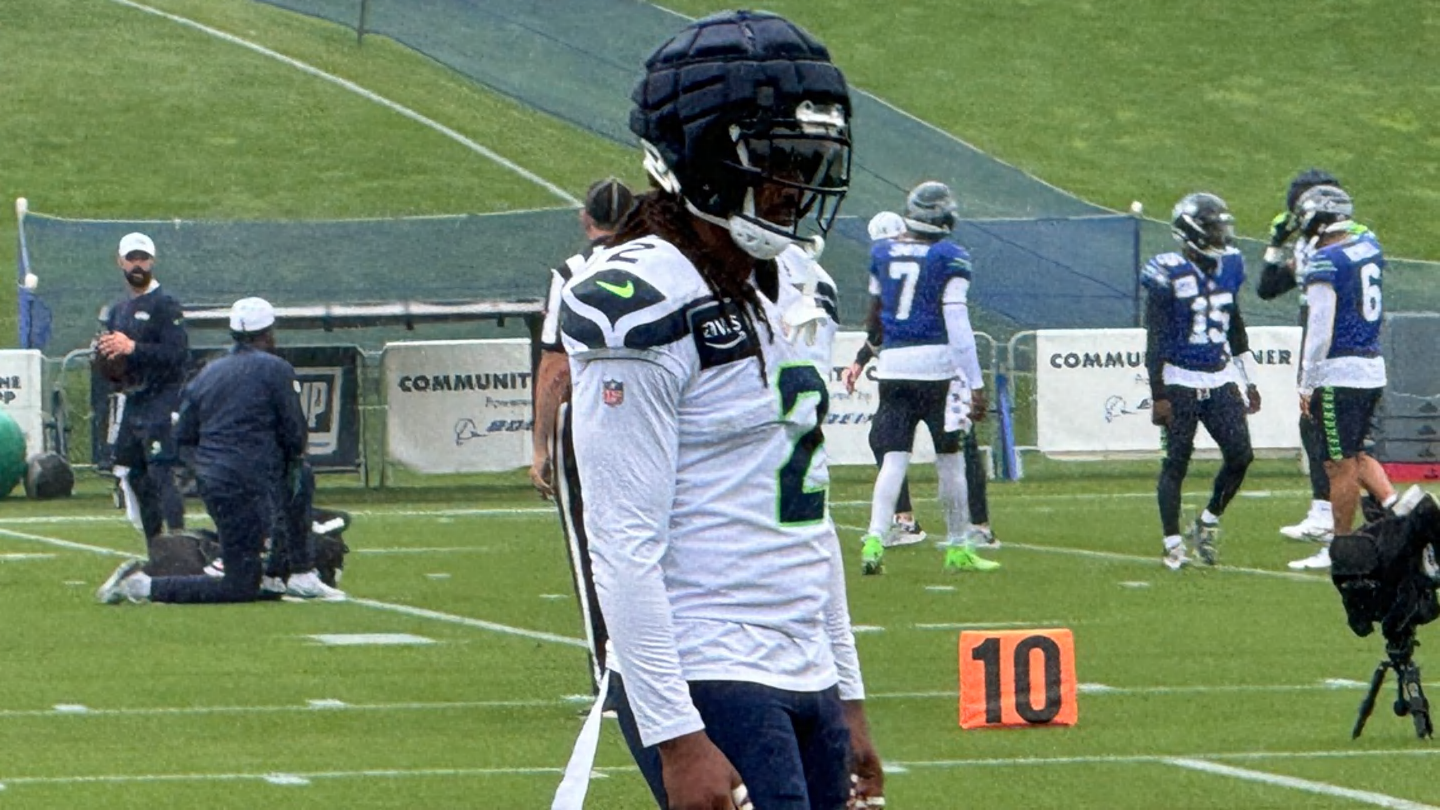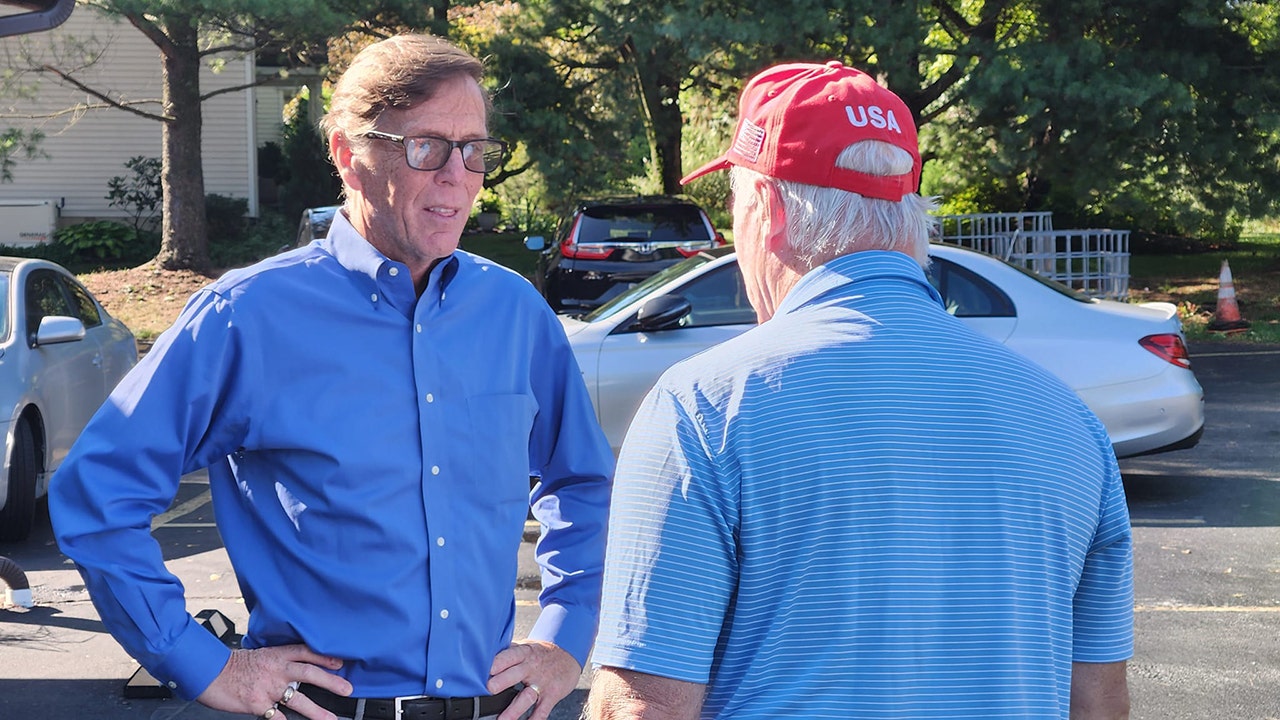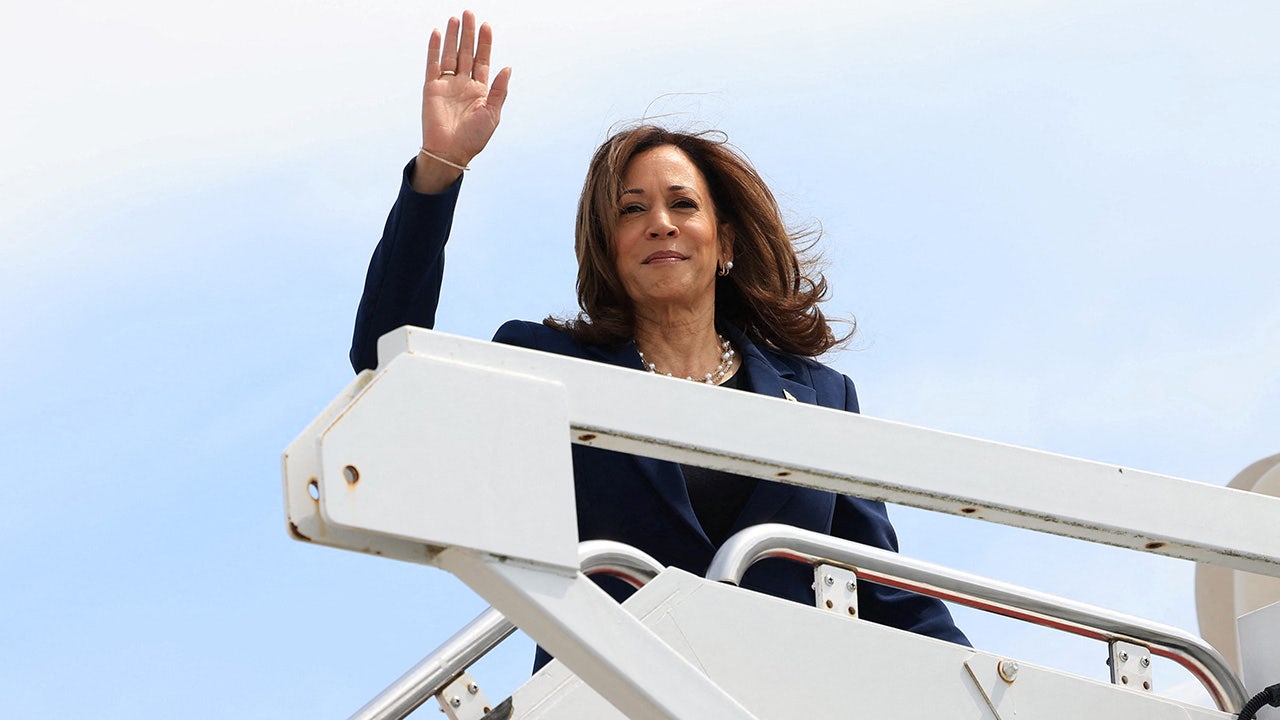Nebraska
Jeremy Pernell: Sizing Up Nebraska Football’s Portal Additions

Nebraska football opens fall camp today, and as Matt Rhule cuts the ribbon on Year 2, there’s a subtle confidence and understated swagger emanating from the players and coaches inside the Osborne Legacy Complex.
Historically, programs with the right coach typically take a big step in their second seasons. Nebraska is in great hands, so it’s understandable that fans and media are expecting a substantial jump this fall, especially considering Rhule’s track record.
I’m right there with them. I believe the Huskers are on the cusp of turning the corner as a program and are on the verge of returning to national prominence.
I think it’s fitting that the turnaround will be spearheaded by an elite defense.
For the first time in over a decade, last season the defense truly played up to its moniker of Blackshirts. The 2023 defense was the best Husker unit in the Big Ten era. Tony White’s squad held nine of 12 opponents to 20 points or fewer and rated among the top five most-improved teams nationally in rushing defense and total defense.
Pro Football Focus graded the Huskers as the No. 13 tackling team in the country, and the numbers the Blackshirts posted were outstanding: No. 11 in total defense (303.5 ypg), No. 13 scoring defense (18.25 ppg), No. 7 rushing defense (92.9 ypg), No. 14 pass efficiency defense and No. 7 in yards per play (4.62).
Nebraska returns 11 defenders from that unit with three games or more of starting experience. The 2024 Blackshirts will be veteran-laden and even having to replace Luke Reimer and Quinton Newsome, should be as good as, and likely better than, they were in 2023, when players had to learn White’s scheme.
Just how good Nebraska is this season depends on how big a step the offense can take.
Last year, Nebraska had its worst statistical offense since 1968. The team committed a nation-leading 31 turnovers while averaging 313 yards and 18 points per game, good for 117th and 123rd nationally. When it comes to offensive plays overall of 10 yards or more, the Huskers had just 127, which was 122nd nationally. They also had only 44 plays of 20 yards or more, which ranked 106th.
Nobody is expecting a reincarnation of “The Scoring Explosion,” but can the 2024 offense at least be middle of the pack nationally? Last year, 27 points and 400 yards a game would have put the Huskers in that range. Had the Huskers done that, they probably would have gone 9-3 and played in Indianapolis for the Big Ten championship.
Nebraska has a more talented team this year and, I would argue, top-to-bottom, their best roster since at least 2012.
Can the Huskers put it all together in Matt Rhule’s second year? Either this year or next — it’s coming. I’m confident in that.
Rhule has a well-earned reputation as a program builder and has done a remarkable job of laying a strong foundation through the 2023 and 2024 recruiting classes. There are over 50 scholarship or NIL-funded walk-ons currently on the roster who are either freshmen or redshirt freshmen.
In his ongoing quest to make Nebraska a premier developmental program, Rhule’s approach to roster building mirrors that of an NFL team that wants to build through the draft and complement the roster with a few difference makers through free agency.
Rhule wants a program that’s centered on the recruitment and development of high school players. He doesn’t want to rely too heavily on the transfer portal. He’s certainly not going to ignore that avenue when building his roster, but he’ll use it as a supplement.
Last December, as the transfer portal was set to open, Rhule discussed his philosophy. “I just don’t know how many teams are winning by bringing in 25 guys. I just think that sometimes that can cause a little chaos. What we want to do is build a roster or nucleus of guys that are all here that understand what we’re doing. I love high school recruiting. I love getting guys here and I love having them for four or five years.”
This offseason, Rhule and his staff used the transfer portal to patch some holes on the roster and replenish a few position groups that needed an influx of talent. I’ll spend the next several days recapping the new additions to the roster and breaking them down by position group. I’ll take a look at the quarterback spot tomorrow.
Stay up to date on all things Huskers by bookmarking Nebraska Cornhuskers On SI, following HuskerMax on X, and visiting HuskerMax.com daily.

Nebraska
Business, local officials line up to oppose Nebraska Gov. Pillen’s property tax plan • Nebraska Examiner

LINCOLN — Dozens of statewide business, municipal and county leaders lined up Tuesday to testify against Nebraska Gov. Jim Pillen’s core property tax proposal.
For more than 10 hours, the Legislature’s Revenue Committee listened to varying perspectives about Legislative Bill 1, which Pillen says would reduce the average Nebraskan’s property tax bill by up to 50%. State Sen. Lou Ann Linehan of Elkhorn, the committee chair, introduced the bill on Pillen’s behalf and presided over the committee hearing.
“There’s not just one key to solving this problem,” Pillen told the committee. “I think it has to be addressed from a multitude of different perspectives.”
Over the summer, Pillen had suggested the state should take over about 80% of the property tax portion of local K-12 school districts’ budgets.
However, as introduced, LB 1 doesn’t include that plan. It instead seeks to carve out more than $2 billion in tax credits targeted to replace school taxes. Those credits would be returned to counties and distributed to taxpayers, based on their portion of property valuations.
Funding sources include new sales taxes on more than 100 currently tax-exempt goods and services and increased or new taxes on seven “sin” items: soft drinks and candy, cigarettes, vapes, spirits, consumable hemp, keno and games of skill.
LB 1 would also restrict municipal and county governments from increasing their annual property tax collections by the greater of 0% (in deflationary times) or the consumer price index. They could skirt those limits if approved by a public vote or in cases of, emergencies, local growth or if needed to fill vacant law enforcement, firefighting or correctional officer positions.
What is a ‘sin’?
Kirk Anderson, president of the Nebraska Beverage Association, focused his criticism at Pillen for labeling soft drinks and candy as a “sin” and passing judgment on the people who buy them.
Anderson noted that Pillen has said “food” would not be taxed, yet soft drinks or candy could open the door to a standard in choosing what foods can be taxed in a complicated tax code.
“Using similar logic, if our governor was really concerned about the health of Nebraskans, it would be more appropriate to consider limiting through taxation the consumption of all processed meats, like bacon, ham and salami, that are classified as a Group 1 carcinogen,” Anderson said.
Pillen’s family owns a major hog operation in Nebraska and stands to benefit from LB 1, Anderson said, yet it is “one of the few select industries that won’t be targeted by his taxes.”
Cody Schmick, owner-operator of Kinkaider Brewing in Lincoln, said an increased “sin” tax on spirits, increasing from $3.75 to $14.50 per gallon, would kill off the industry “before we get started.”
Todd Roe, founder of Lazy RW Distillery in Moorefield, said the proposed 287% increase would “drown us” and the distillery “will be done” within three years if LB 1 is passed. He said that his distillery prepares about 250 gallons of spirits each month but that customers may shop in a different state if the tax is added on.
“No matter how loyal they say they are,” Roe said of his customers, “everybody’s loyal when you’re sitting in Hy-Vee giving out free shots.”
Opponents raised concerns about nearly every one of more than 100 goods and services that would be newly taxed under LB 1, in addition to the “sin” taxes.
Business ‘inputs’
The statewide sales tax rate is 5.5 cents per dollar purchase plus local sales taxes, which can be between 0.5 cents and 2 cents.
All goods and services would be taxed under that system, except for four items: agricultural and manufacturing machinery and equipment, which would be taxed at 2 cents, and carpentry services and electricians’ services, at 4 cents. These items would be exempt from local sales taxes.
Pillen’s staff has told the Nebraska Examiner that machinery and equipment are still intended to be taxed at a 4-cent rate, as previously planned, although that would require an amendment to the bill.
Mark McHargue of the Nebraska Farm Bureau and Heath Mello of the Greater Omaha Chamber of Commerce said even at those lower rates, taxing business or agricultural “inputs” would be bad tax policy. Mello is a former state senator.
Multiple testifiers described the proposed changes as a “tax pyramid scheme” that would decrease transparency as taxes are passed on after multiple taxed stages of production.

Linehan asked McHargue and Mello for their definition of “inputs.” McHargue described inputs as raw materials used to produce an end product, which is taxed. Mello’s definition also included legal and accounting services, which Linehan said might be more broadly tax write-offs.
Bryan Slone, president of the Nebraska Chamber of Commerce, said the state can’t tax its way out of its decades-long property tax problem and that it must grow its economy.
“This bill will fall specifically on young people who don’t own property yet,” Slone said. “I will be a benefactor, and a lot of my age group will be benefactors, so we need to be very careful in how we tax people.”
Passing on savings to tenants
Andy Marsh of Keystone Properties in the Grand Island and Hastings areas pushed back on criticism that renters wouldn’t benefit from the property tax savings. He said the “writing is on the wall” for how tenants would benefit.
However, Lynn Fisher and Arla Meyer, both of the Nebraska Realtors Association, said the increased taxes on various goods or services could result in net tax increases for property owners, which would be passed on to particularly low-income renters in less expensive housing.
“Now is not the time to make buying or homeownership more expensive or difficult,” Meyer said.
Dave Nabity of Omaha said something needed to be done to fix property taxes and said people would have to be “financially nuts” to want to retire in Nebraska, rather than in other states.
“Our national reputation stinks, folks,” Nabity said. “We don’t have the Ozarks. We don’t have the lakes. We don’t have the beaches. We don’t have the mountains.… We don’t have the warm weather.”
‘We have wiggle room’
Craig Bolz of Palmyra asked for significant tax relief and spending controls. He urged taxing all sales so the consumer can decide what to purchase, adding: “How much fairer can you get than sales taxes?”
“We all know that at the end of the day, taxes are all smoke and mirrors,” Bolz said.
Rachel Gibson of Omaha said a shift to sales tax from property taxes needs to be “equitable.”
With property taxes, Gibson said, she would know what’s coming and be able to plan accordingly, compared to dealing with unexpected sales taxes on purchases, such as home maintenance, car repairs or veterinary visits.
“We have wiggle room, and we love it here and we’re happy to pay in taxes,” Gibson said. “I’m worried about the people who don’t have the wiggle room and don’t have insurance.”
‘Solving’ vs. ‘prolonging’ a crisis
State Treasurer Tom Briese, who worked on various tax relief proposals in his seven years as a state senator, spoke in favor of the proposal. He described it as a “game changer” and “a different animal.”
“LB 1 creates a stark choice here between solving the crisis vs. prolonging the crisis,” Briese told the committee. He served in the Legislature from 2017 until last Oct. 31.

Briese said he calls “baloney” on critics who said the bill’s impact on Nebraskans would increase or shift taxes. He sees LB 1 as “much-needed, revenue-neutral, textbook tax reform.”
Ernie Goss, an economist from Creighton University, said he did an analysis of LB 1 and projects the broadening of Nebraska’s sales tax base will stimulate growth. He said property taxes are a greater detriment to growing Nebraska.
Rebecca Firestone, executive director of the Lincoln-based think tank OpenSky Policy Institute, said her organization’s analysis highlights the regressive nature of sales taxes on low-income Nebraskans.
Under that analysis, household incomes for Nebraskans making less than $30,000 would see about 11.24% of their budgets going to taxes, and a 0.27% increase in taxes overall. Nebraskans in the top 20% bracket, above $141,700, would pay about 8.84% of their income on taxes, and 0.04% less in overall taxes if LB 1 passed.
County and municipal governments
Jon Cannon, executive director for the Nebraska Association of County Officials, and Lynn Rex, executive director of the League of Nebraska Municipalities, expressed caution about the property tax collection caps included in the bill.
Cannon said they could become a “floor” instead of a “ceiling” as county spending is largely focused on roads, bridges, law enforcement, jails, courts, elections and administration of the state’s tax system. He quipped that officials aren’t using “gold plates” on roads or “mixing diamond dust” with gravel to raise costs.
Rex and Cannon said inflation isn’t accurate when considering “basket of goods” counties and municipalities are purchasing.
“We don’t get fire trucks at Wal-Mart,” Rex said. “We don’t buy police cars at Target.”
Douglas County Attorney Don Klein and Douglas County Public Defender Tom Riley encouraged the committee to include their offices’ spending as a broader exemption of public health and safety.
LB 1 allows local governments to ask voters to approve bonds or other increases above the built-in restrictions. Such votes could only be considered during regularly scheduled elections.
Cannon said elections would be too soon in May and too late in November for his members, who start budgeting in the summer.
The committee took no immediate action on LB 1.
Revenue Committee hearings will continue through Saturday before members work through the 67 bills and constitutional amendments introduced by senators. In total, 105 bills and constitutional amendments were introduced, which Speaker John Arch said was a record number for a special session.
GET THE MORNING HEADLINES DELIVERED TO YOUR INBOX
Nebraska
Nebraska teen accused of causing train derailment for ‘most insane’ YouTube video

The teen was charged with two felony counts after he was accused of causing a train derailment, filming it and posting it to YouTube. Prosecutors want to try him as an adult.
A 17-year-old Nebraska boy is facing felony charges after he was accused of derailing a train and posting the subsequent crash on YouTube.
The Bennet, Nebraska boy was charged in Lancaster County Juvenile Court last week, though prosecutors have filed to get the case moved over to adult court, according to documents obtained by multiple local outlets.
The teen is accused of tampering with the components of a railway on April 21, causing a BNSF Railway train loaded with coal to derail. Investigators said the resulting damage to two locomotives and five cars totaled around $350,000, according to KLKN-TV and WVIT-TV.
After the accident, the teen, who was described as a train enthusiast, reportedly notified authorities of the derailment. When they arrived and told the 17-year-old they did not yet know the cause of the crash, he replied: “Obviously a switch was flipped the wrong way,” according to local reports.
The train conductor later told investigators that the crash was caused by a misaligned switch, which was found to be missing a padlock that is usually attached to prevent unintended movement.
Police said in an affidavit that the teen was able to describe to them where the switch was and how it worked and that they discovered a camera tripod set up near the crash site just minutes before the accident, reported KOLN-TV.
The teen also reportedly showed police a video he took on his phone, according to KLKN-TV. Two days later, a video investigators believe to be linked to the teen was uploaded to YouTube titled: “Loaded BNSF Arbor COLLIDES and DERAILS in Bennet, NE! MOST INSANE VIDEO I’VE EVER TAKEN!”
The teen has been charged with two felony counts of criminal mischief for intentionally damaging or tampering with property. USA TODAY has reached out to Lancaster County Attorney Patrick F. Condon and BNSF Railway for comment.
Nebraska
Oregon Duck Mascot Surprises At Nebraska Cornhuskers Media Day
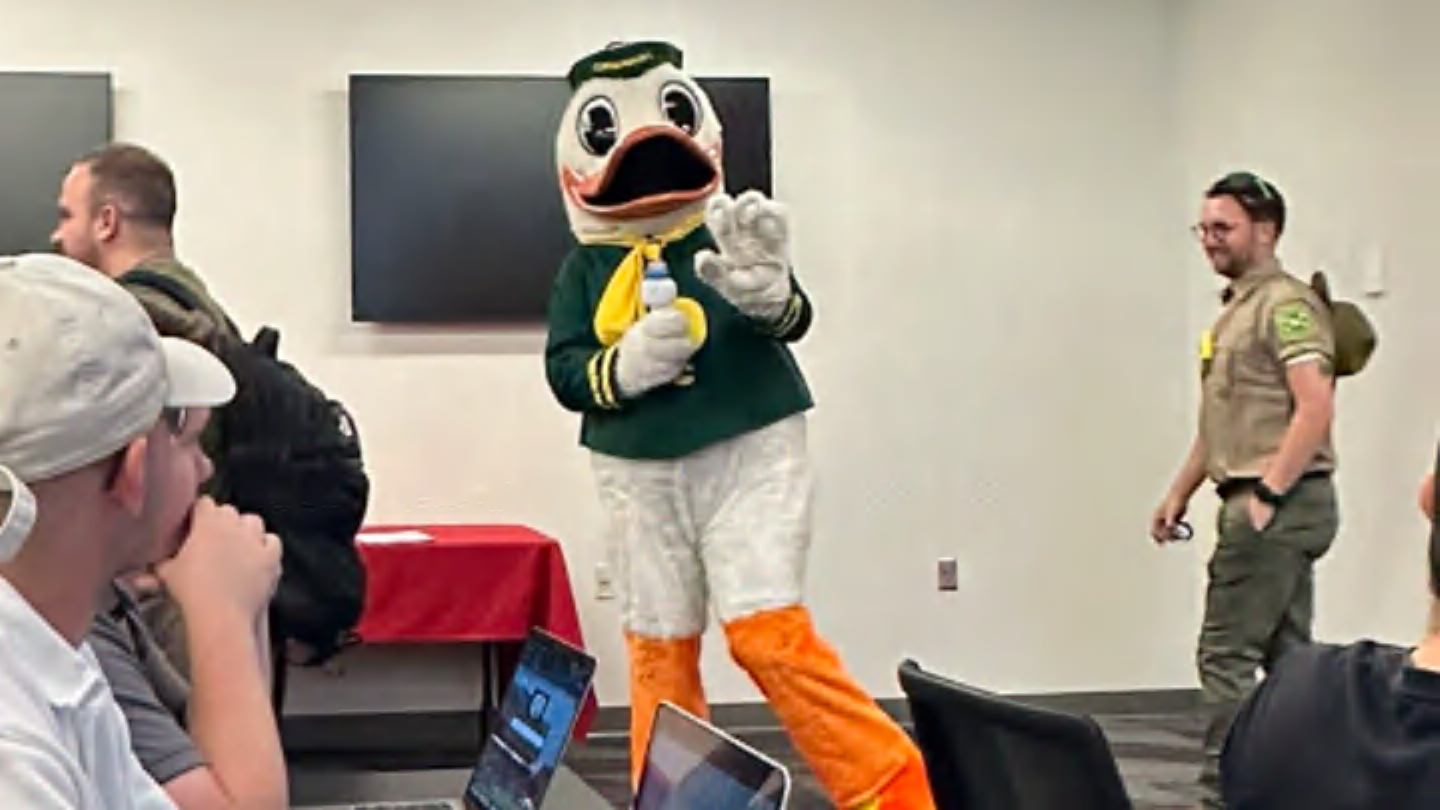
The Oregon Duck Mascot surprises the Big Ten Conference again! This time, the Duck decided to fly across the country to attend Nebraska Cornhuskers Media Day. Local Nebraska media couldn’t believe that the Duck is at their season opening press conference.
Cannot wait to see what Nebraska coach Matt Rhule has to say when he sees the Duck at his press conference.
Just a normal Nebraska press conference day pic.twitter.com/ckjWQAhtlF
— Nick Sehnert (@nick_sehnert) July 30, 2024 So the Oregon duck is here? pic.twitter.com/PccyvQe2VR
— Amie Just (@Amie_Just) July 30, 2024 I don’t know what’s going on but I’m not unhappy about it pic.twitter.com/CB5K6iqjmZ
— Erin Sorensen (@erinsorensen) July 30, 2024
This is a perfect example of what Oregon Ducks coach Dan Lanning meant when he said, “Oregon is mighty different” at Big Ten Media Day in Indianapolis last week.
For their inaugural Big Ten Media Days in Indianapolis, Oregon busted out a massive inflatable Duck to float the White River in downtown Indianapolis.
“I’m hoping we get to travel that Duck to all of our away games this year.” Lanning said.
While the inflatable Duck might not hit the road this season, it looks like the actual mascot, might!
The Ducks have undoubtedly one of the most recognizable brands in college football and this move will definitely bring even more eyeballs to Oregon as it joins the Big Ten conference.
“We’re mighty different when it comes to the jerseys you might see us wear, or the facilities that we get to be in,” Lanning said. “And we’re innovative, and we’ve always been on the cutting edge of everything we do. We’ve certainly positioned ourselves to be on the cutting edge and we’re grateful for the opportunity to compete in the Big Ten.”
The Ducks are college football realignment winners. Oregon is a first-year Big Ten team that can contend right away for a Big Ten title and in the College Football Playoff.
Oregon is also certainly already winners when it comes to marketing, branding and having fun.
-
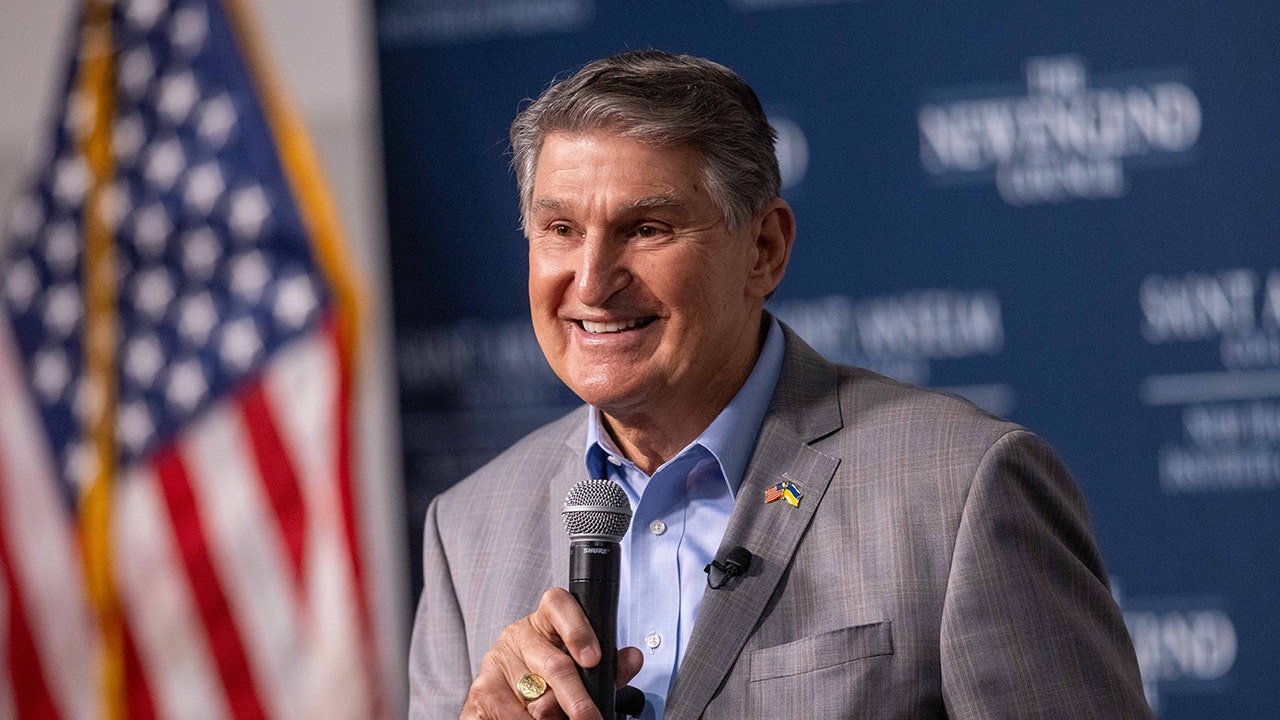
 Politics1 week ago
Politics1 week agoManchin considers re-registering as Democrat to run for president
-

 News1 week ago
News1 week agoHow the Trump Rally Gunman Had an Edge Over the Countersnipers
-
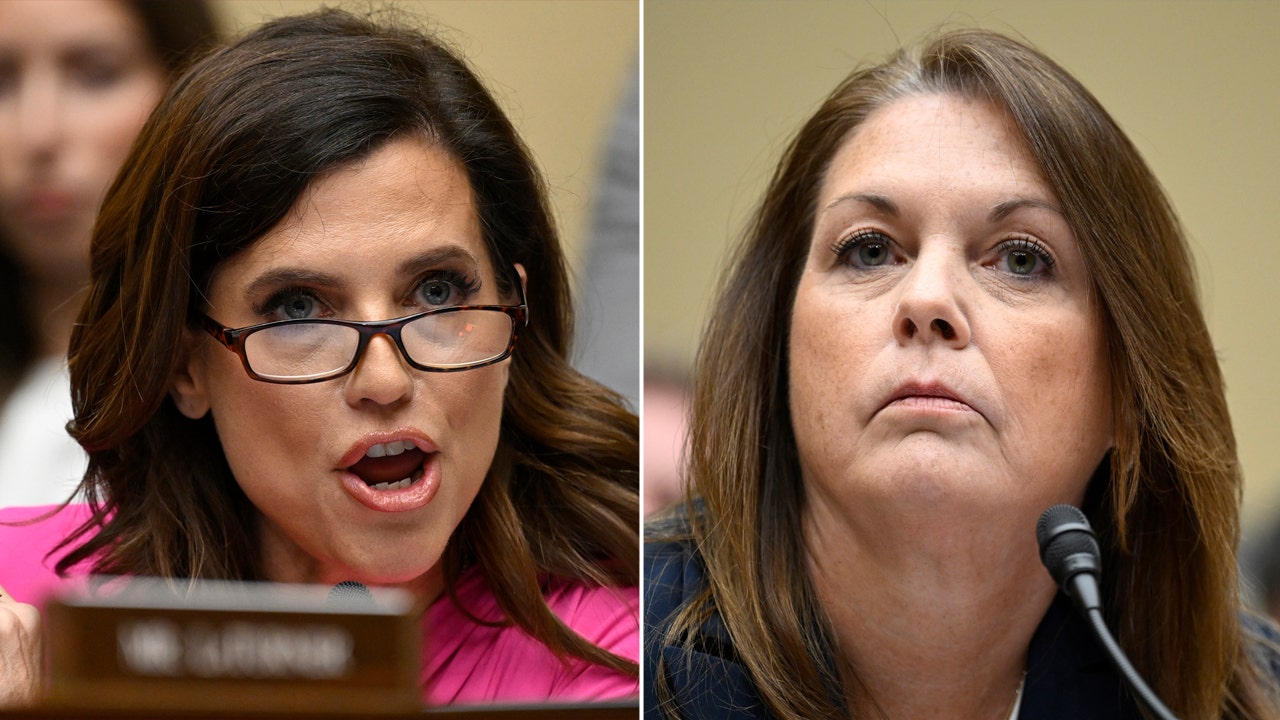
 Politics1 week ago
Politics1 week agoTop five moments from Secret Service director's hours-long grilling after Trump assassination attempt
-

 Politics1 week ago
Politics1 week agoDem strategists say Harris 'only practical choice' as party leaders begin endorsing her
-

 News1 week ago
News1 week agoMayorkas names panel to conduct review of Trump assassination attempt
-

 News1 week ago
News1 week agoGeorge Clooney Endorses Kamala Harris, Says Biden Is ‘Saving Democracy’
-

 News1 week ago
News1 week agoVideo: Secret Service Director Faces Bipartisan Calls to Resign
-

 World1 week ago
World1 week agoThousands in Mallorca demand 'less tourism, more life'

